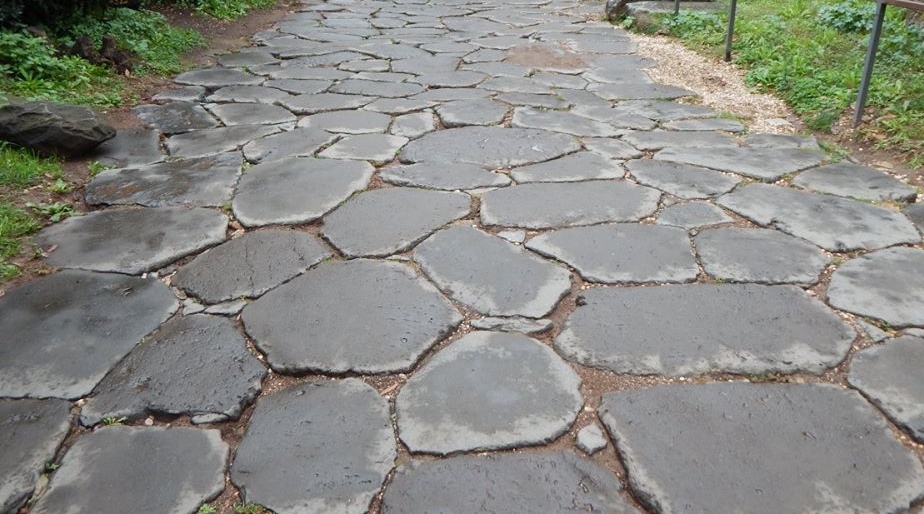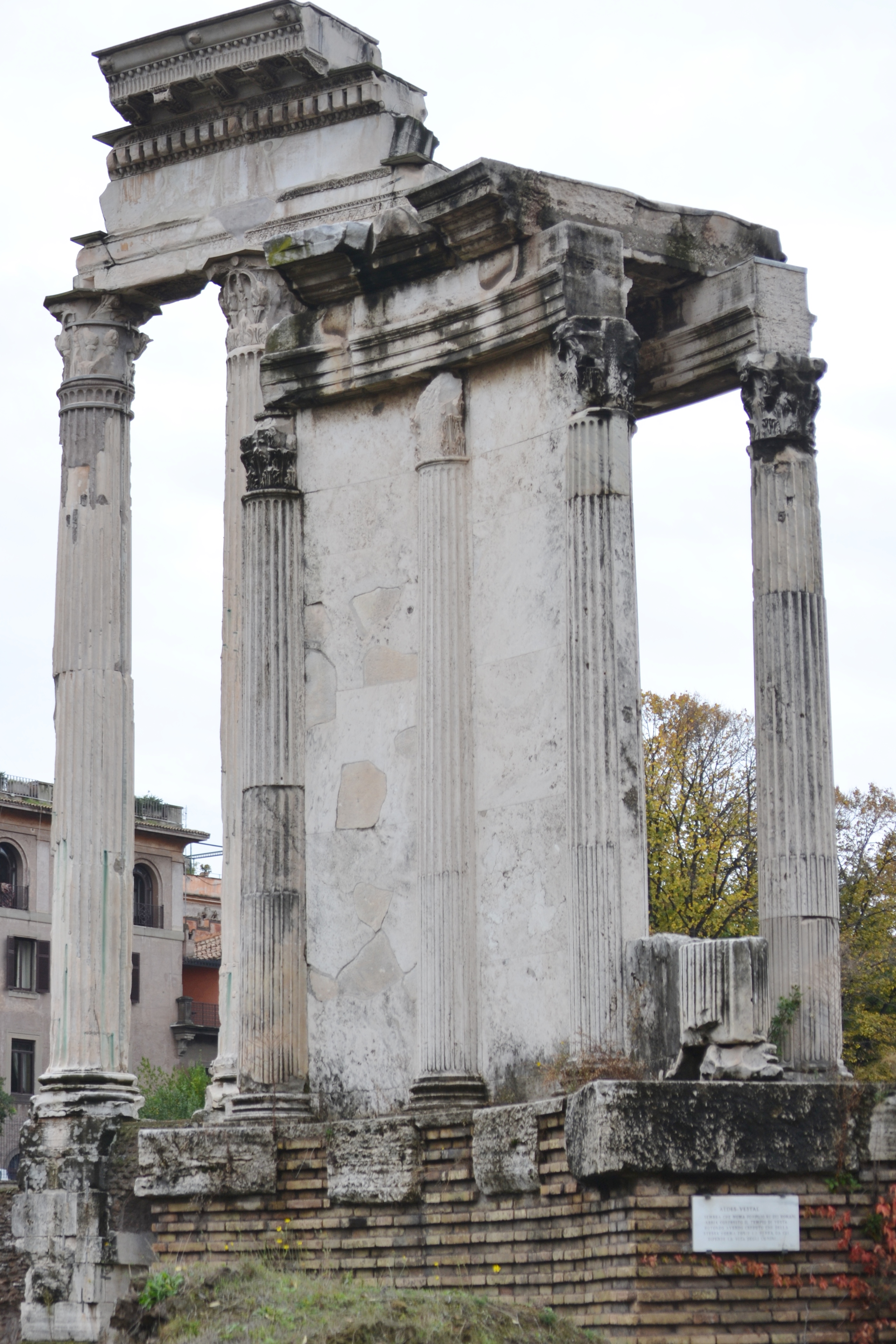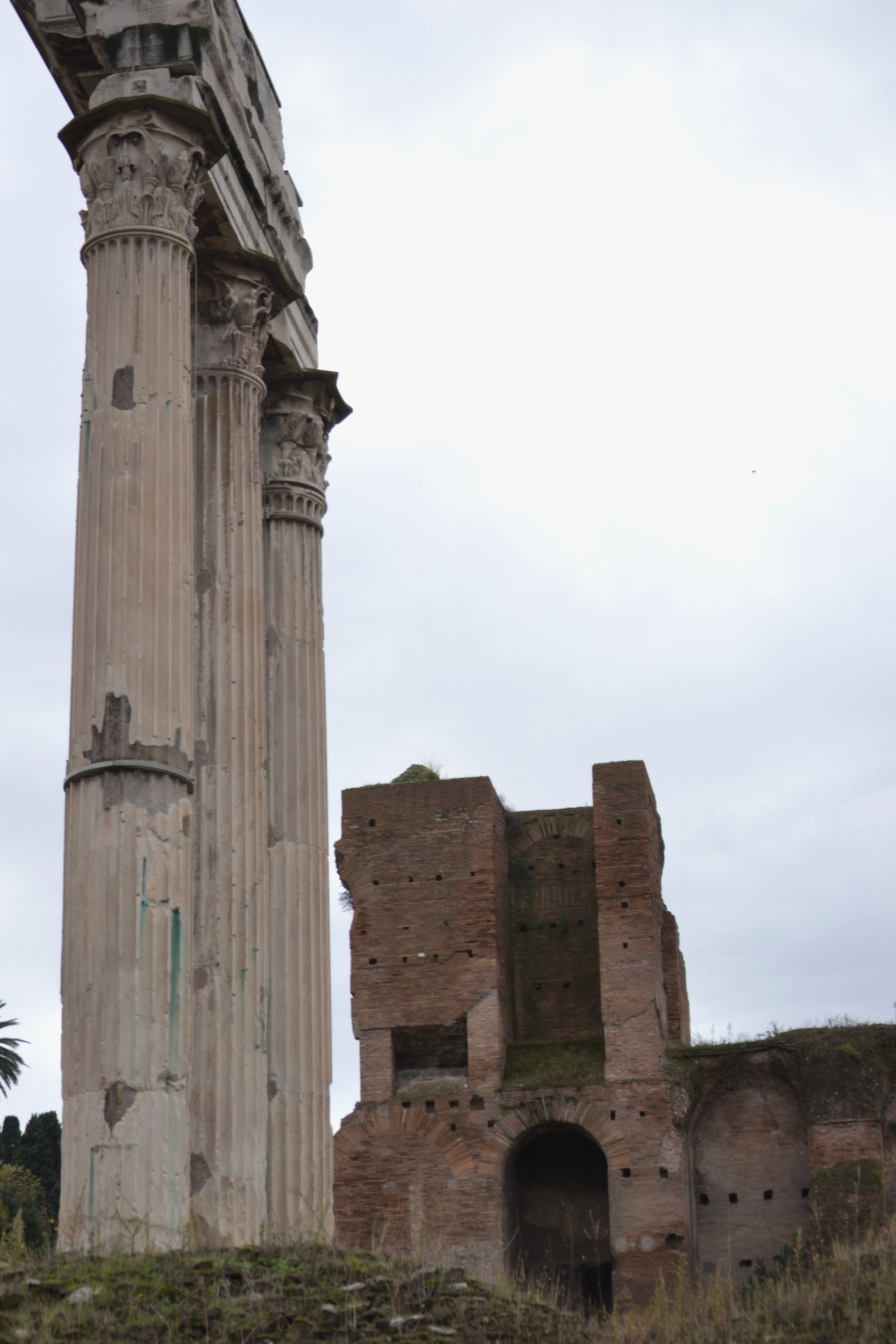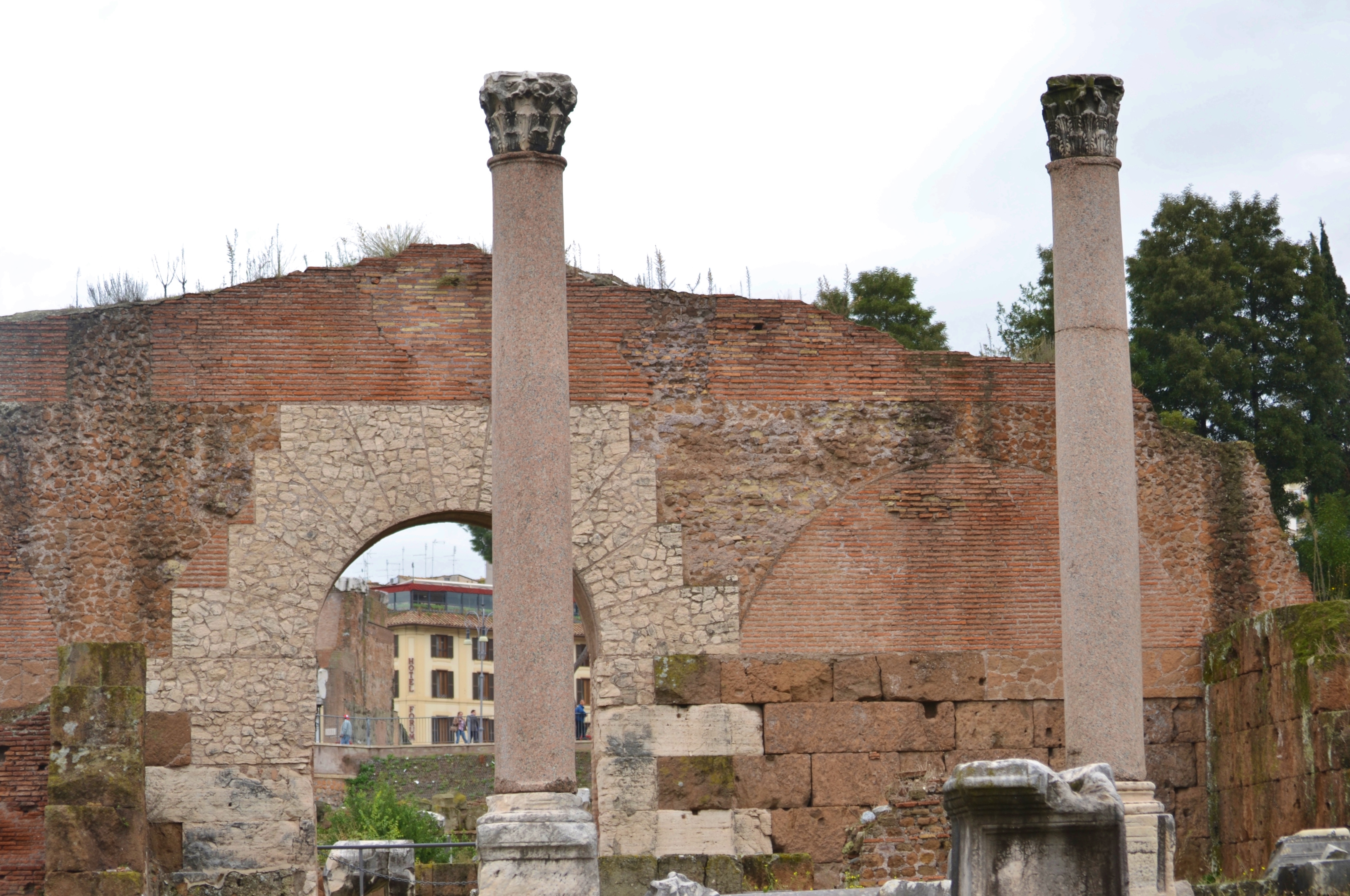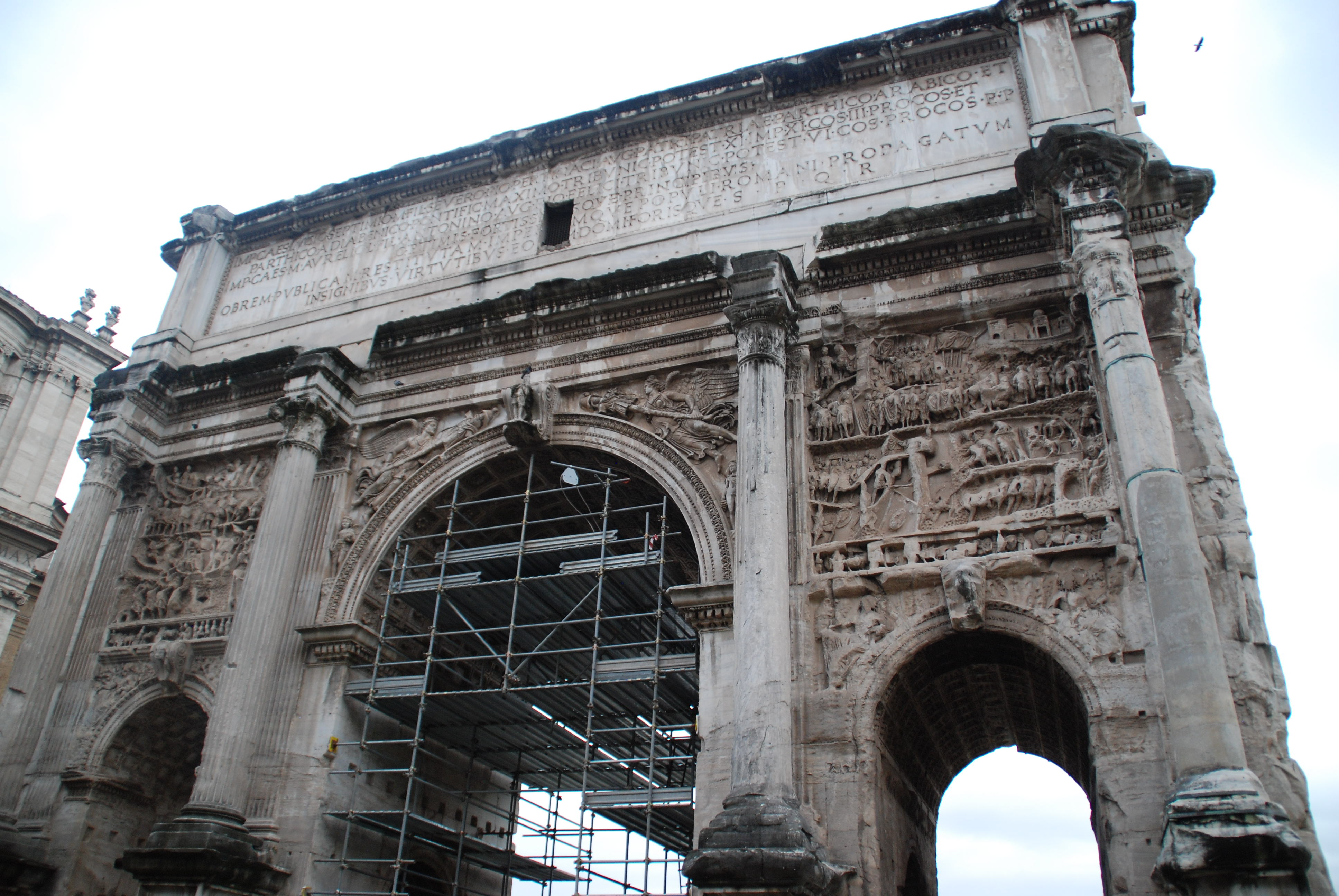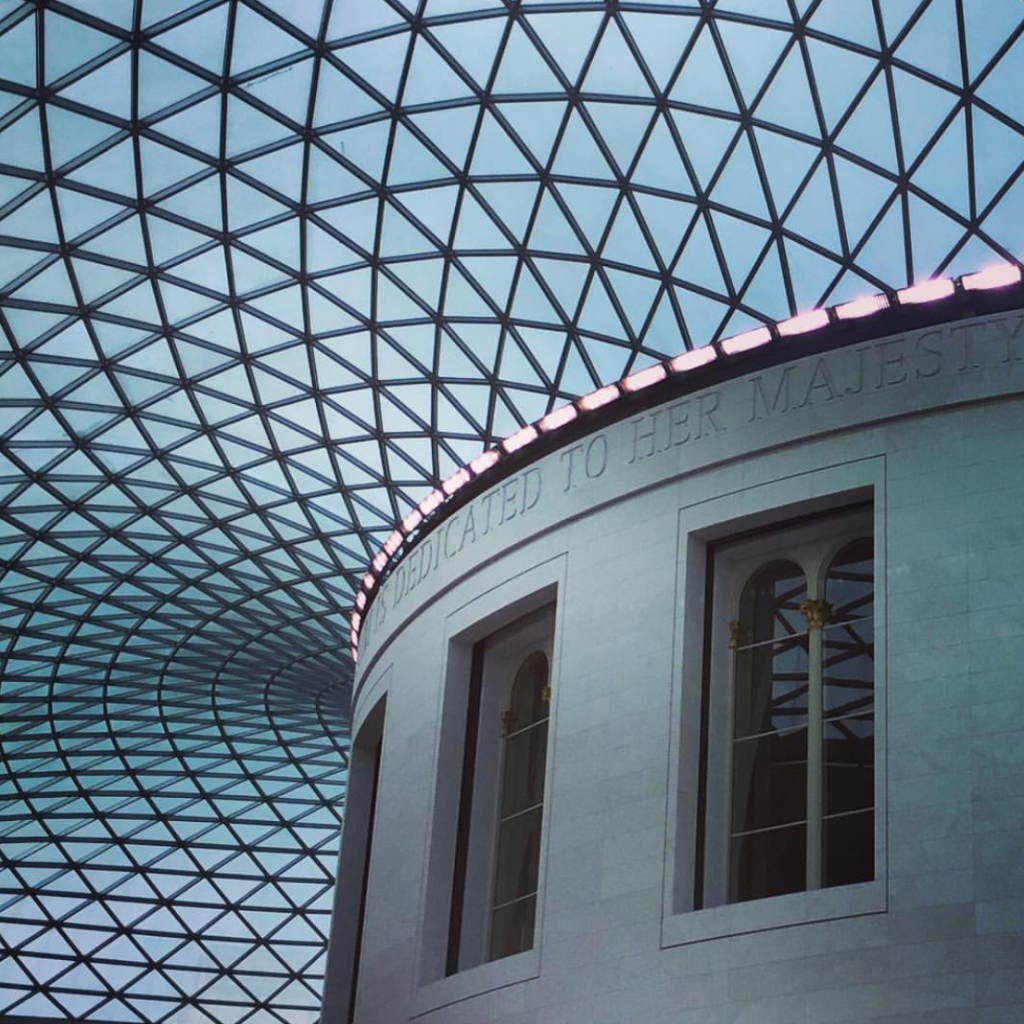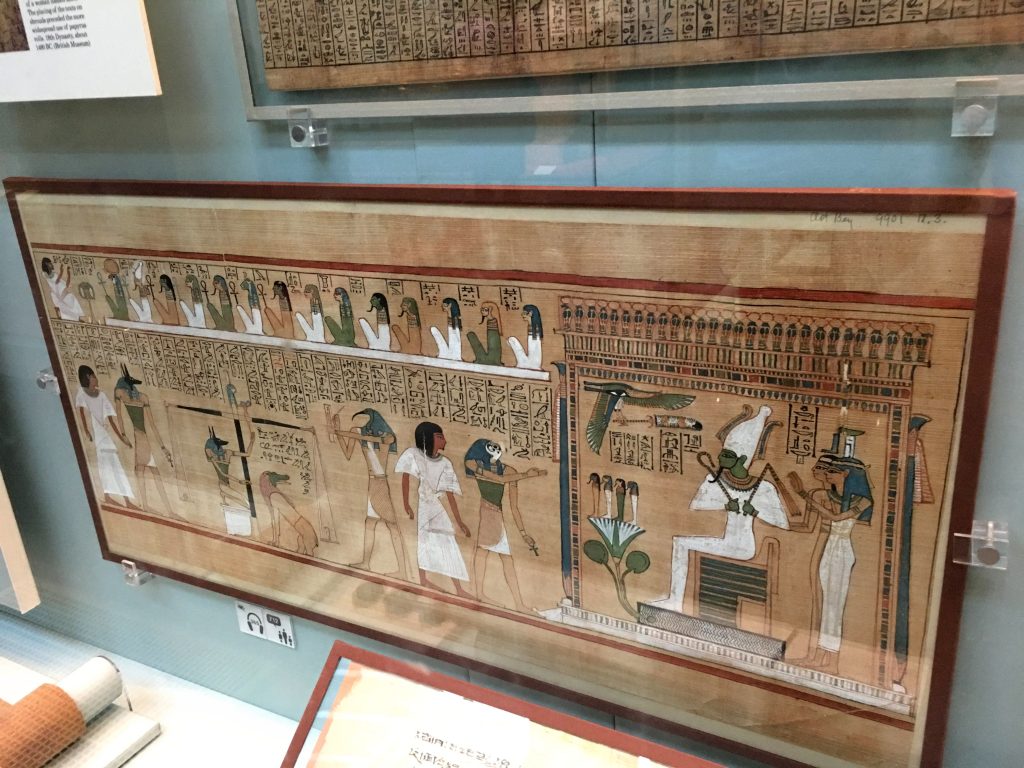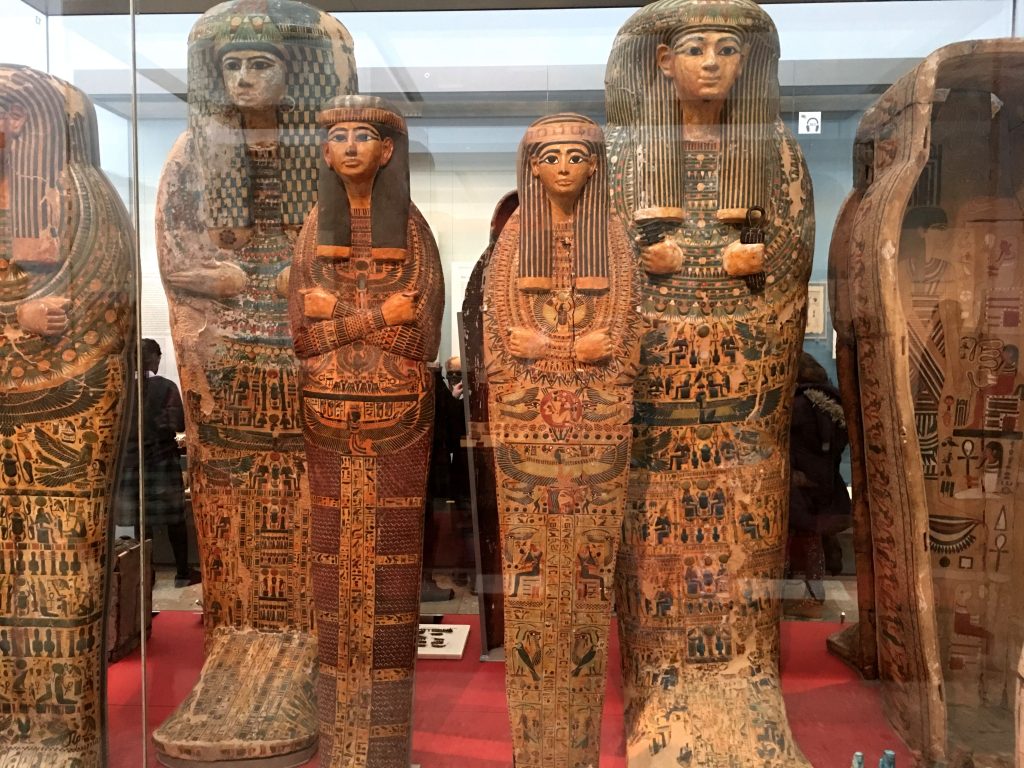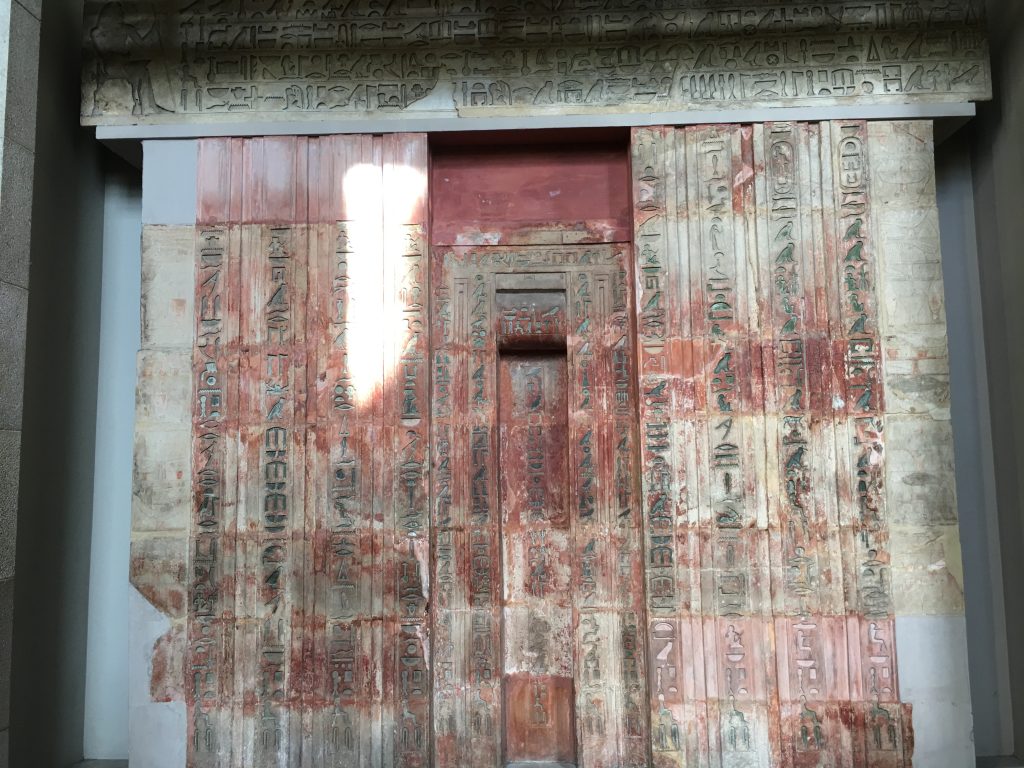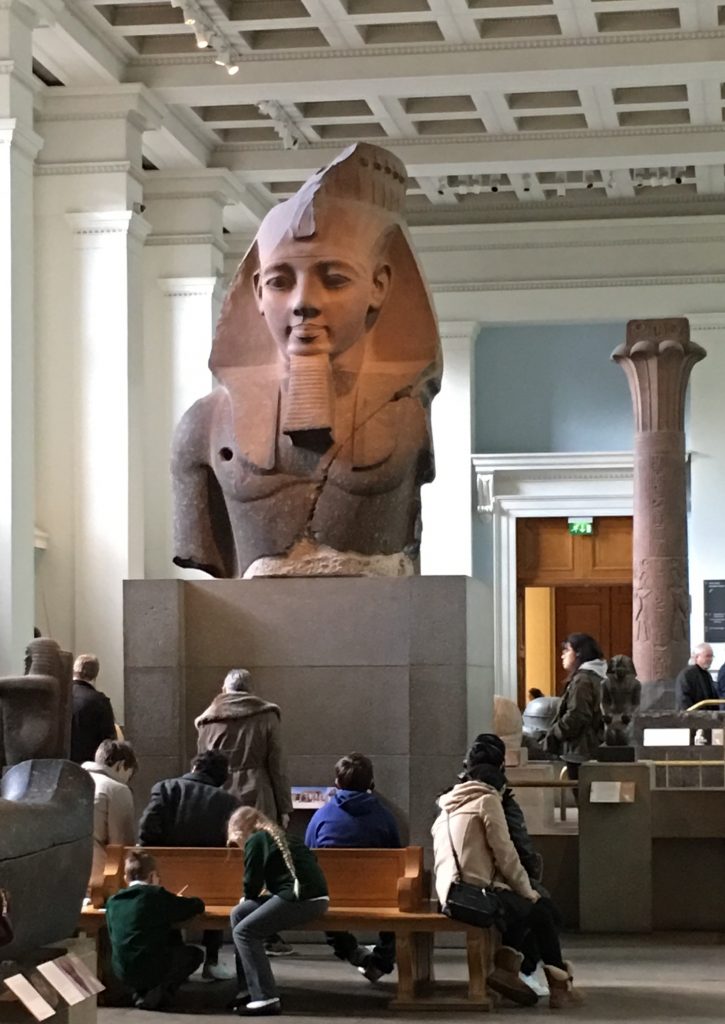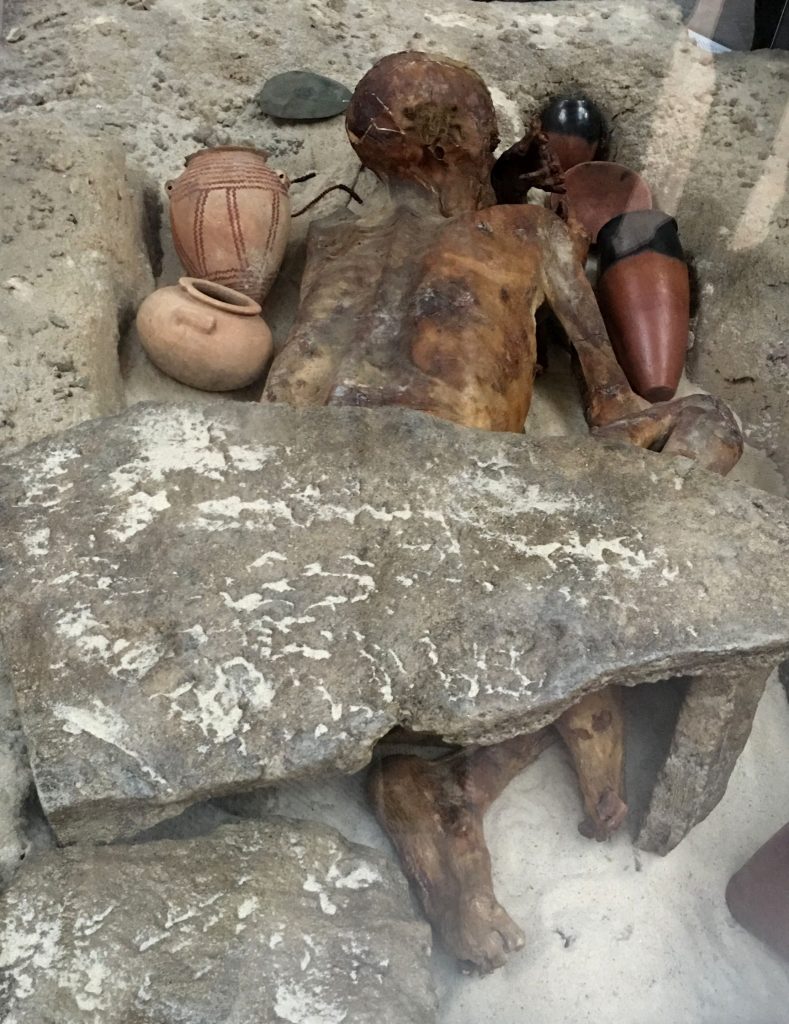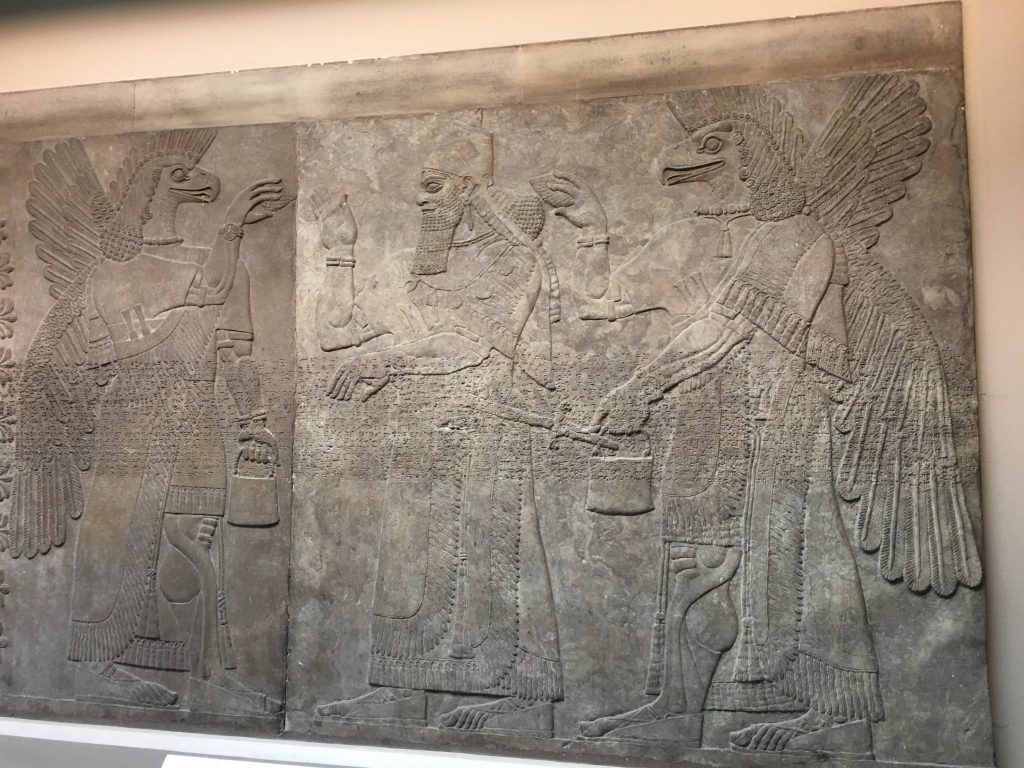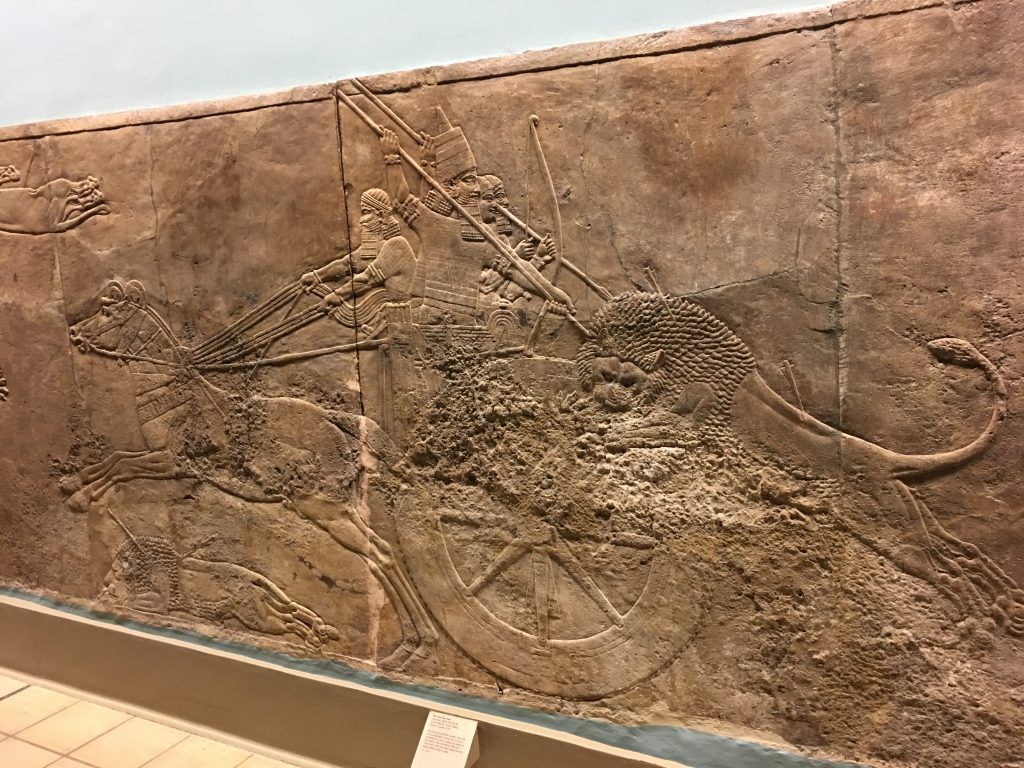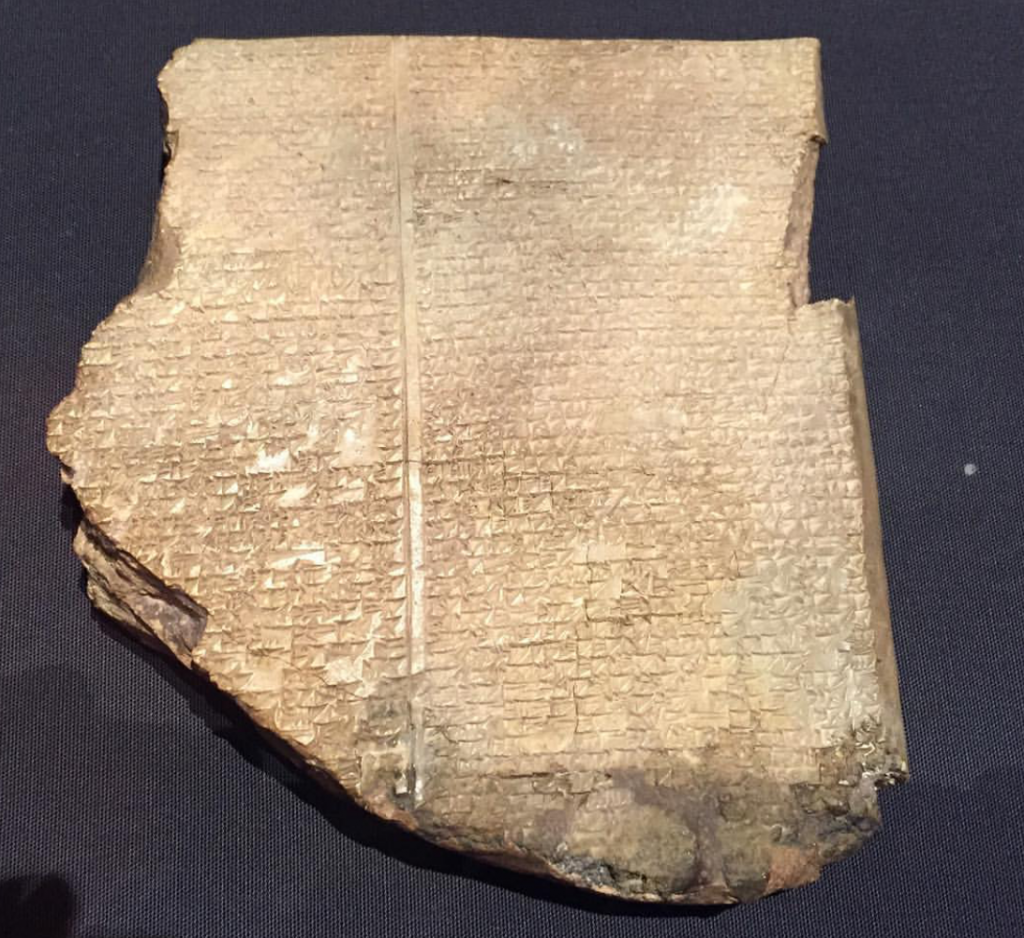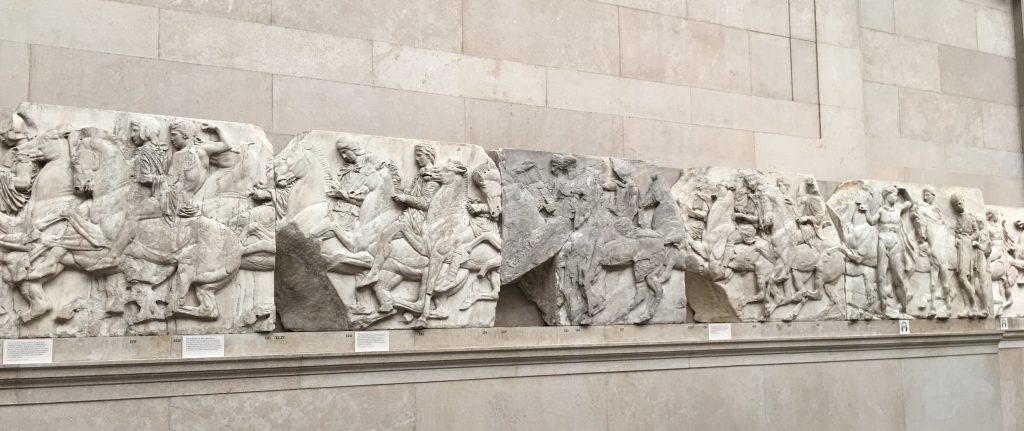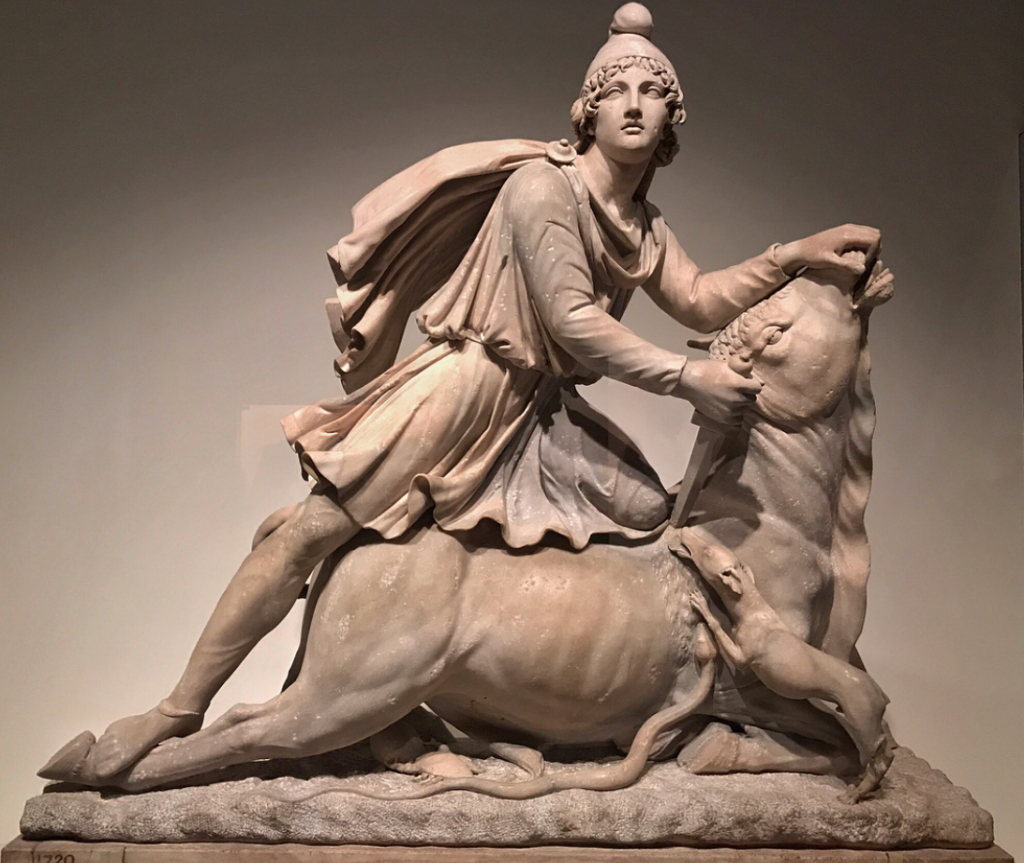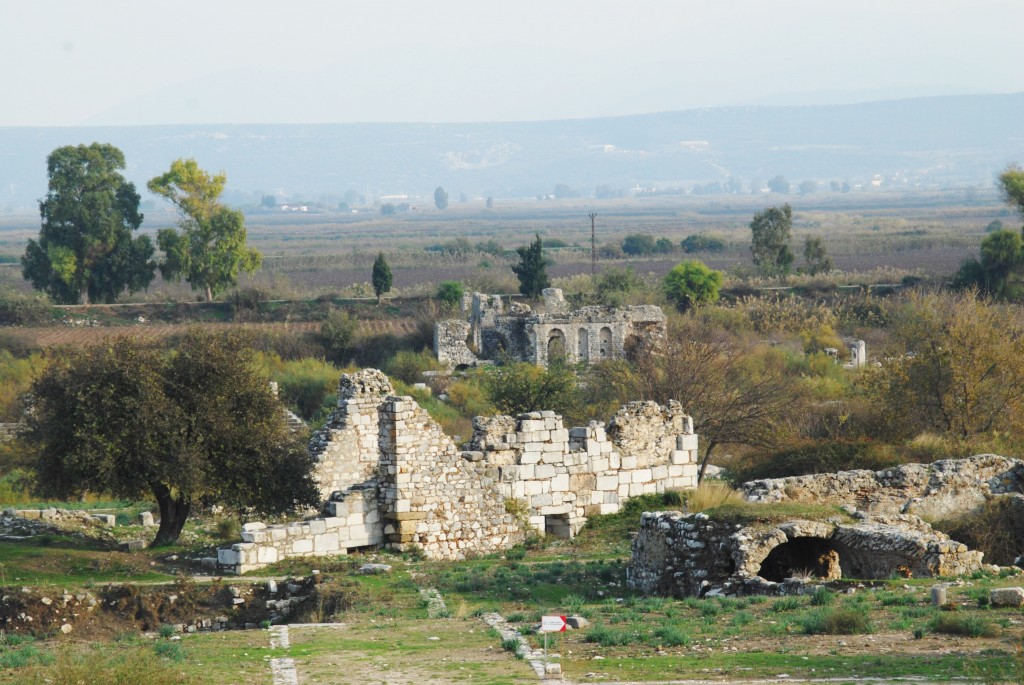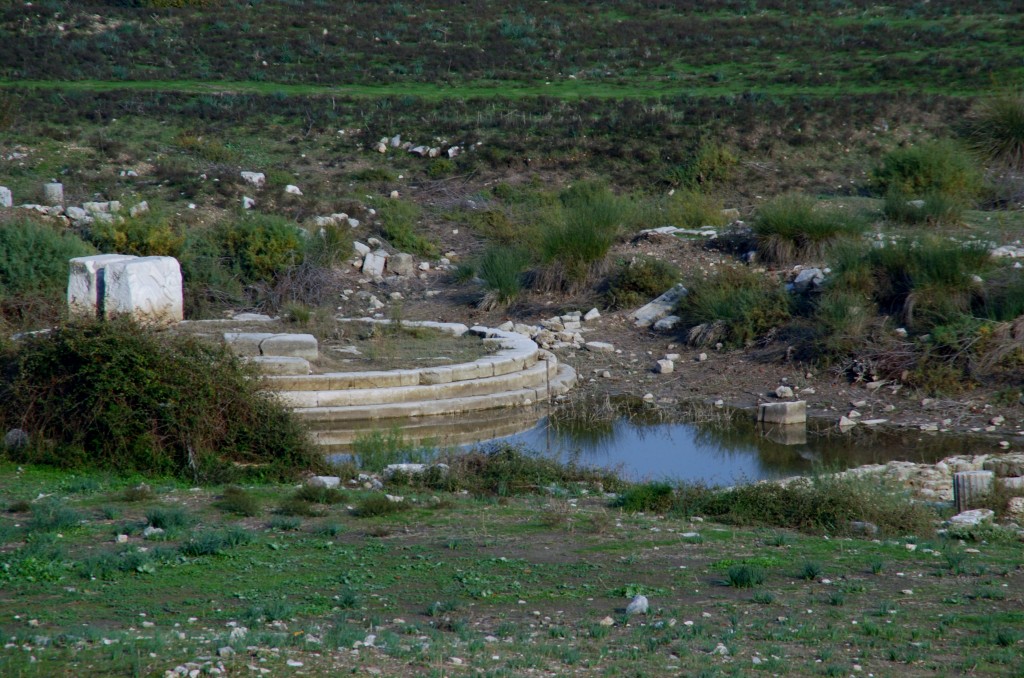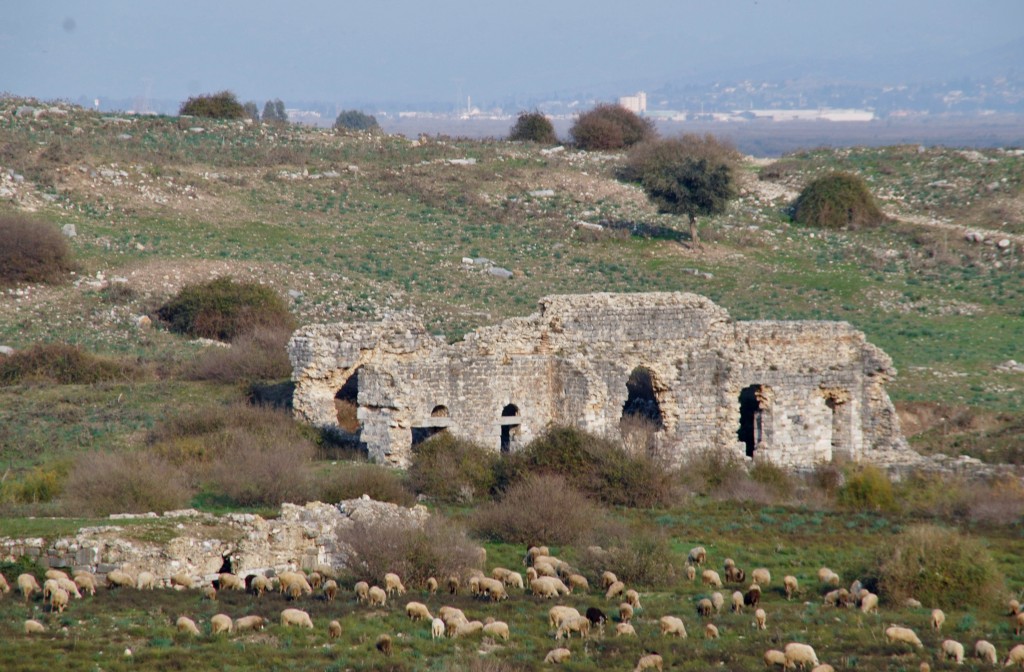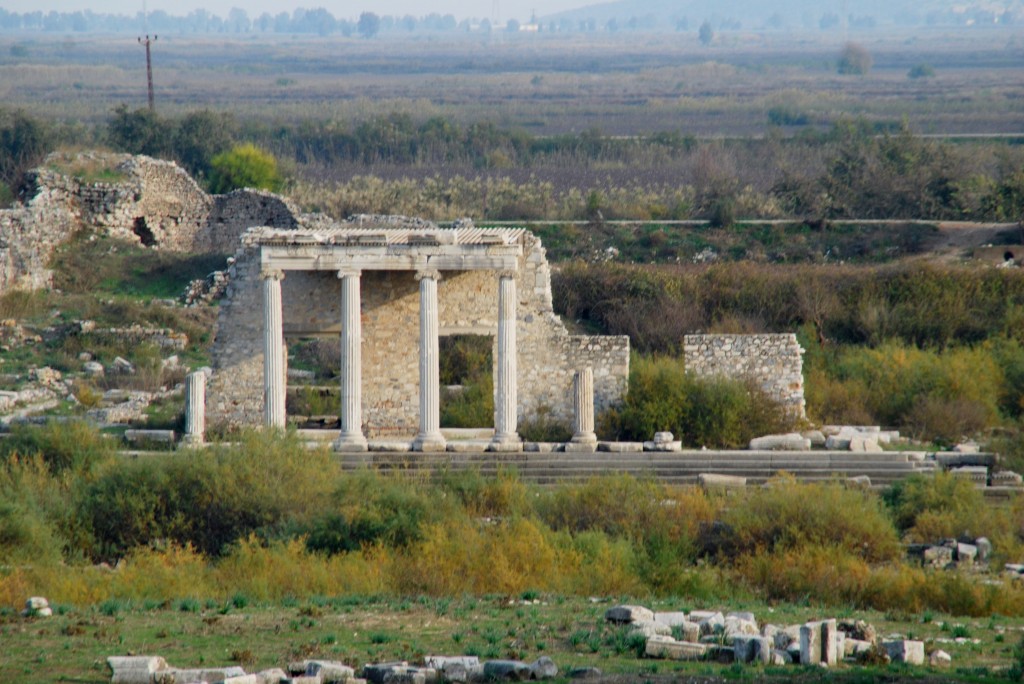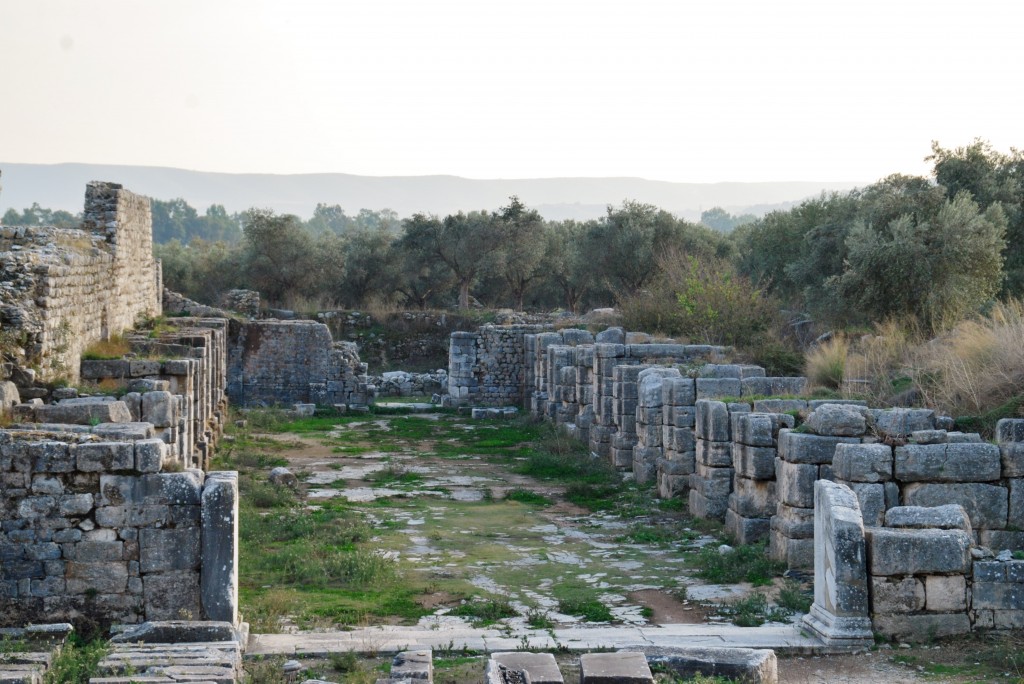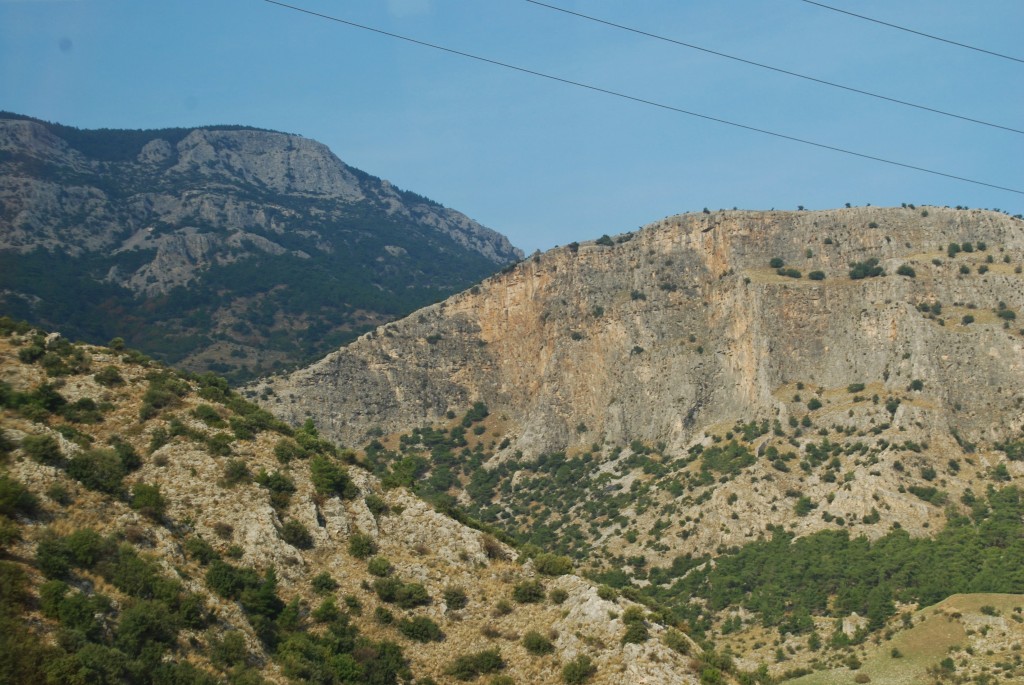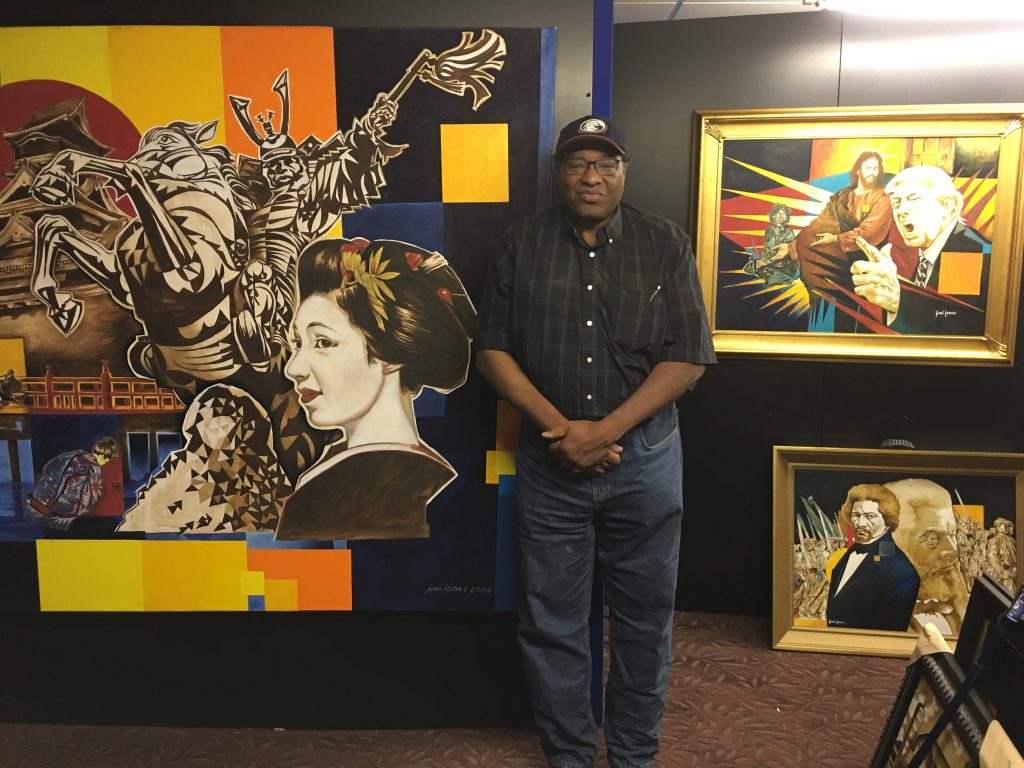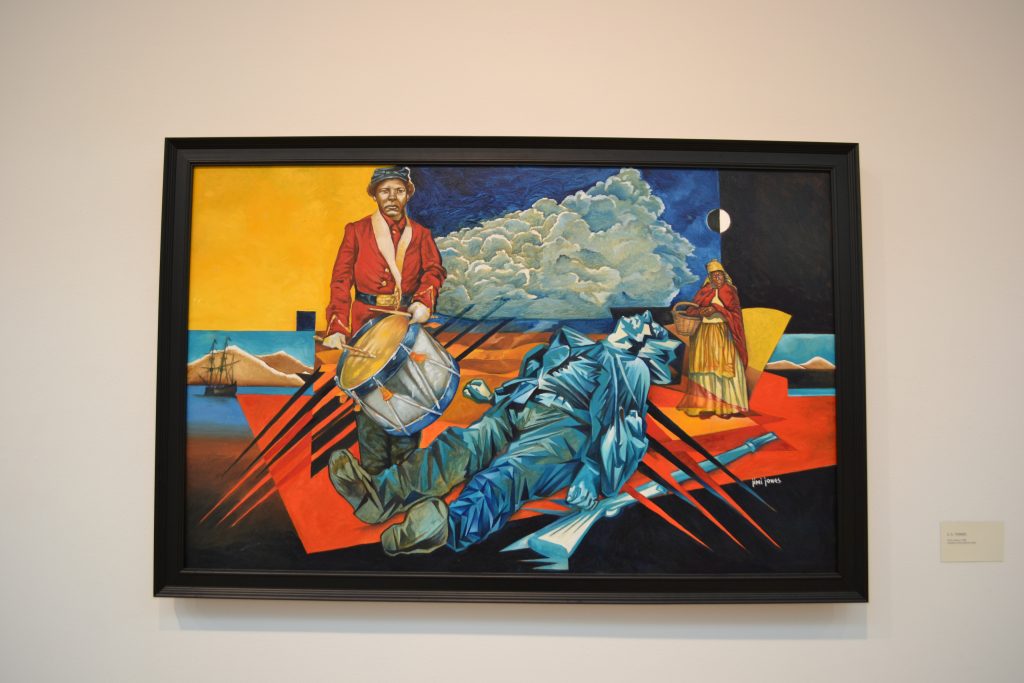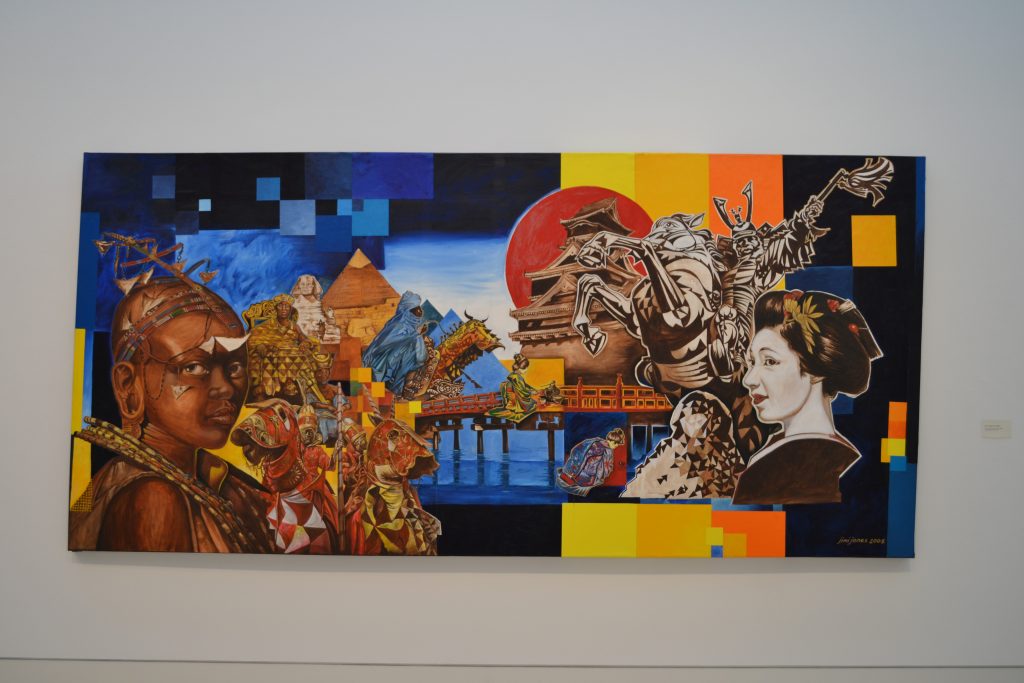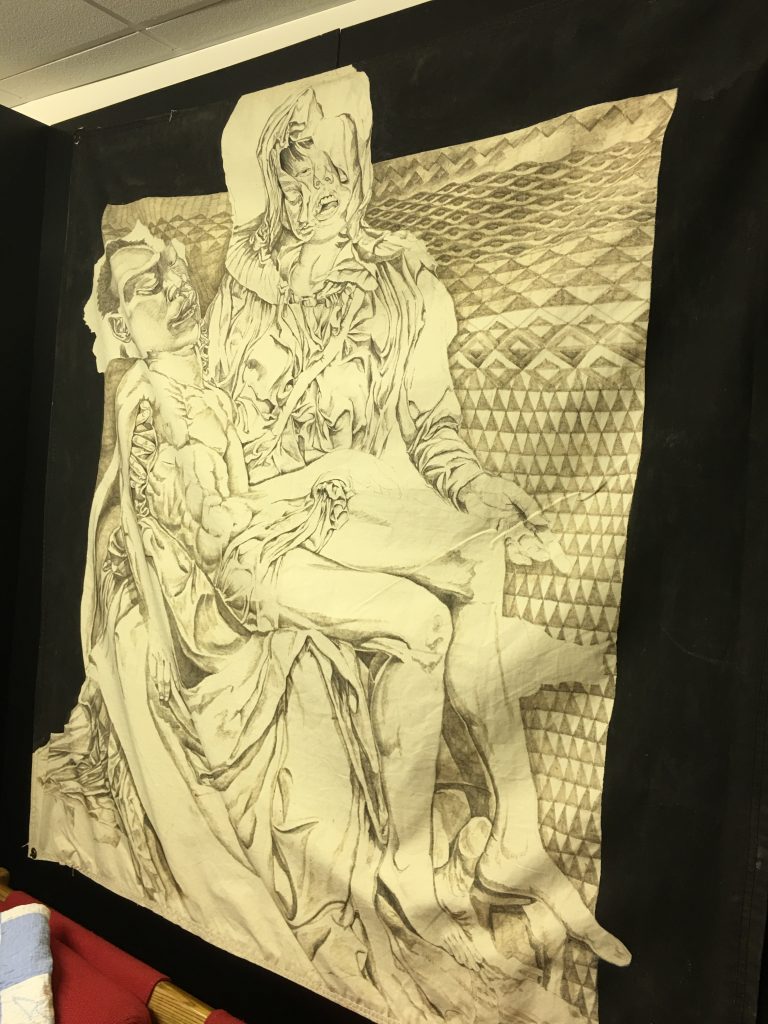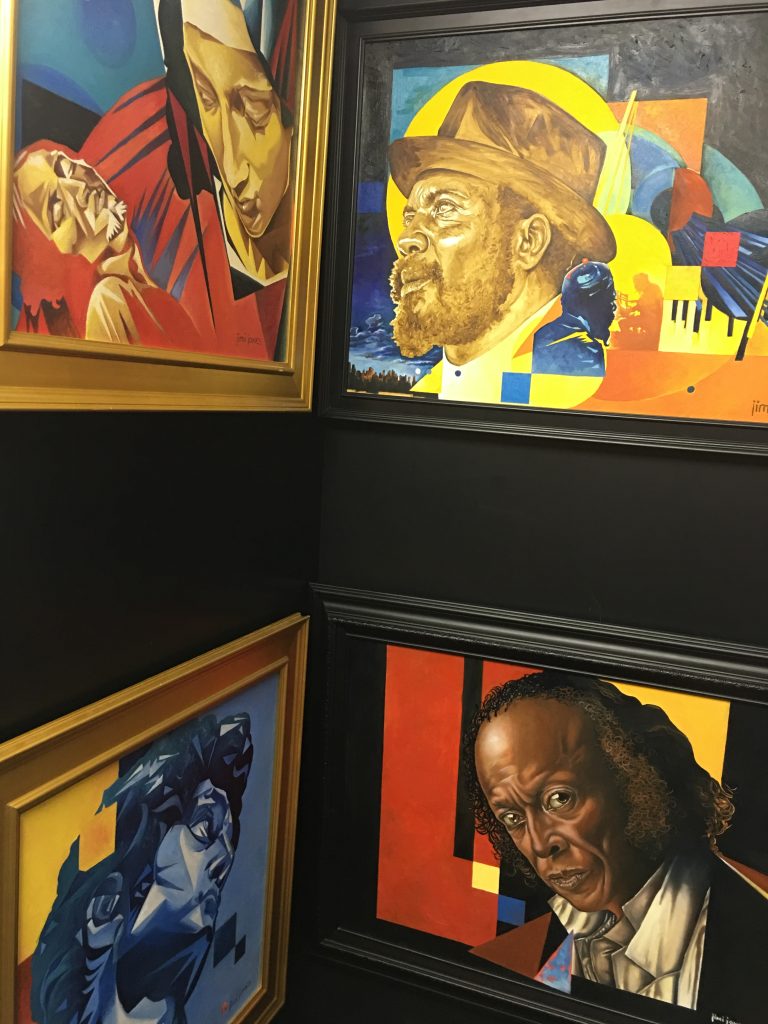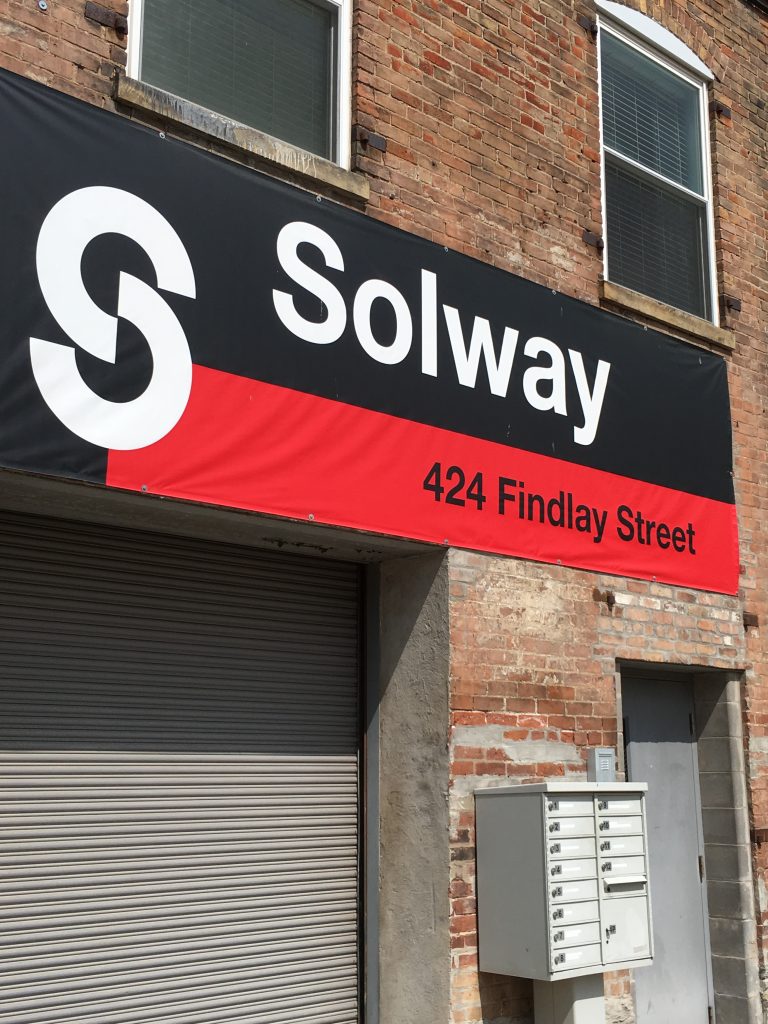Strolling along the smooth, round stones of the Via Sacra, I am reminded that “all roads lead to Rome”. To imagine that I was standing at the epicenter of one of the world’s most fascinating civilizations, was hardly a moment I would soon forget. The ancient ruins ahead were a myriad of fragments representing structures that had been constructed over a span of centuries. Other historical buildings remained intact, miraculously surviving the destruction of war and years of plunder.
During the height of its power, Roman streets would have been crowded like a modern day New York City. Religious temples and political basilicas co-mingled together at the heart of Rome’s Republic. Prominent partisan figures settled legal disputes and made daily decisions to keep order among its citizens. While public orators stood on street podiums shouting over the crowds to provide news-worthy updates, the populace remained informed.
The Sacra Via was the most important road of central Rome during the height of its rule. Over the years the Forum’s landscape would undergo several changes as the “sacred road” had to adapt to its reconstruction and restoration. Roman rulers left their mark within the Forum removing monuments and temples only to replace them with their own.
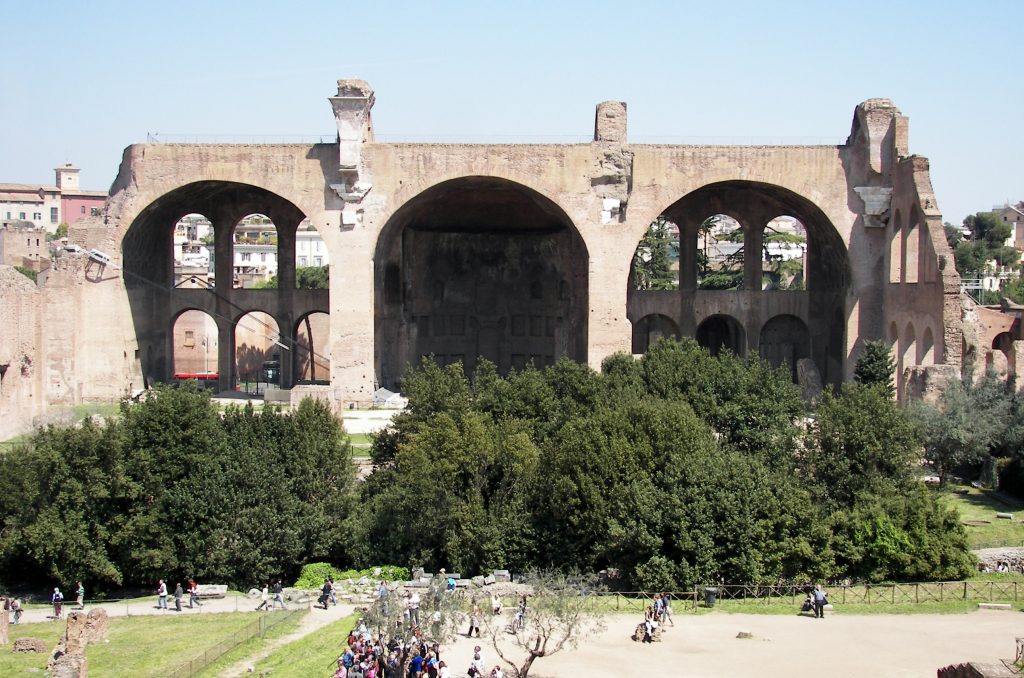
Our first introduction into Roman politics includes a stop at the Basilica of Constantine, also referred to as the Basilica Maxentius. Not to be confused with a place of worship, this Basilica, with its three large arches was considered ancient Rome’s judicial system. What remains is only about one-third of the size of the structure and another set of arches would have stood opposite along the Via Sacra. The space in between was a large hall that would have been as long as a football field made of marble and full of statues, including a gargantuan statue of Constantine, sitting on his throne at the west end of the basilica. The hand of Constantine shows the enormous size of the statue, which is on display in Rome’s Capitoline Museums.

Because the Romans believed that their gods played a major part in the ongoing success of Rome, temples were built to worship these deities to keep them happy. Each god represented an important facet of everyday life. For example, the god of Saturn provided oversight for wealth, agriculture, liberation and time. The Romans also believed that the Emperors of Rome became gods once they had died and temples were erected in their honor as well, such as the Temple of Antoninus Pius and Faustina. The price they must have paid to guarantee their immortality.
When the temple was first erected, the tall, 50-foot Corinthian columns would have supported a triangular pediment displaying a number of brightly colored statues. An inscription on the lintel identifies Antoinus Pius and his wife, Faustina, “divo” and “divae”, representing the deification of the couple. During the medieval times, the structure was pillaged as evidenced by the diagonal marks on the marble pillars.
Since the 12th century, the temple has been occupied by a church and the green door was once level with the street during the time of Michelangelo. It wasn’t until the 1800s, when the excavation of the site uncovered the long staircase which leads to the current Sacra Via.
The most sacred location in all of ancient Rome was undoubtedly the Temple of Vesta. Only three short columns remain of the circular temple dedicated to the Roman family, where an eternal flame once stood. This holy light was tended by a small group of priestesses known as the Vestal Virgins, who were responsible for keeping the torch lit at all times. Should the light go out, the virgin responsible for manning the flame would be flogged as punishment.
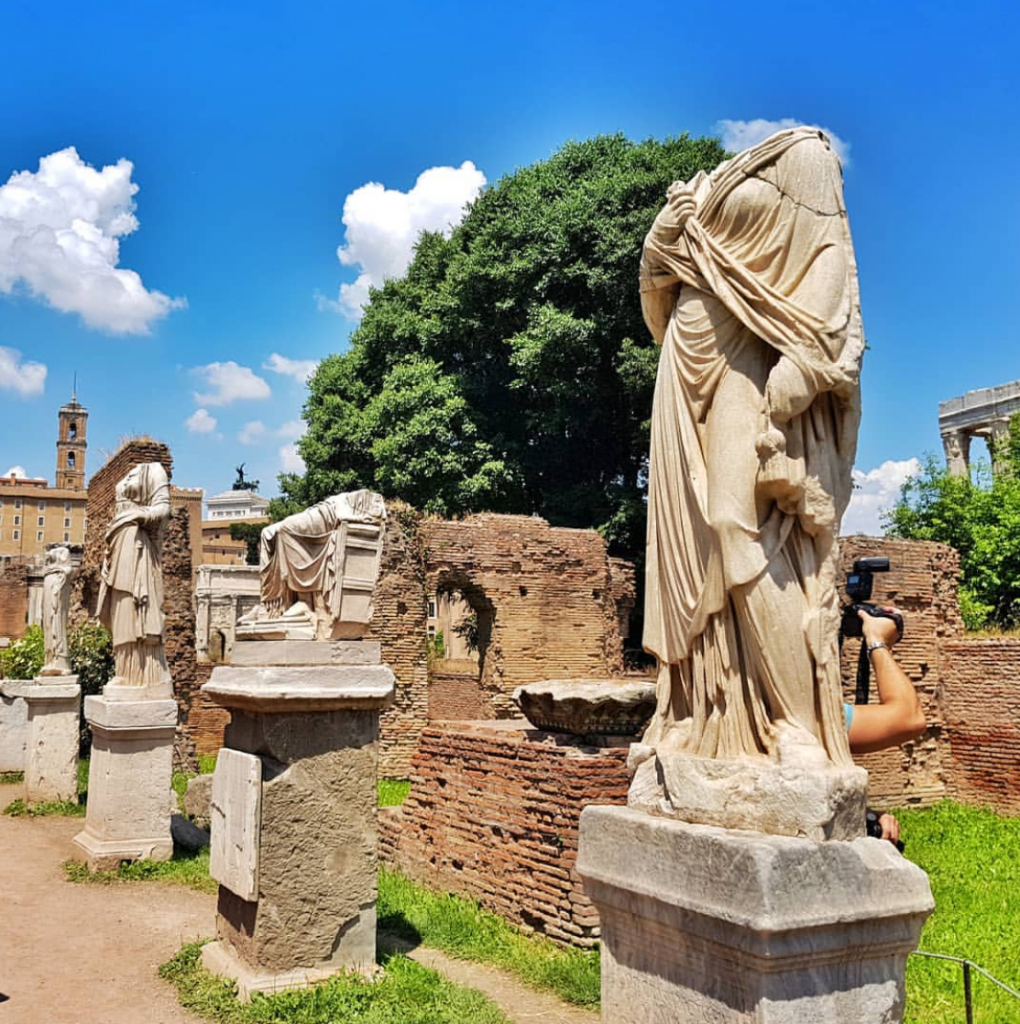
Nearby, located across from the Temple of Romulus, stands the remains of the Atrio delle Vestali (House of the Vestal Virgins). Once a beautiful two-story building, the House of the Vestal Virgins accommodated a small group of elite young ladies who dedicated the prime of their lives to the service of Vesta, the goddess of the hearth and patron of the state.
Selected from the noble families of Rome before the age of ten, this revered organization of girls lived together for a period of thirty years, taking a vow of chastity. If the Vestal Virgin completed her term of service, she was offered a large dowry and could finally marry. However, if she did not adhere to the requirements of her role, she was buried alive.
Each emperor expanded his residence and added more space to his royal palaces. The Palaces of Caligula and Tiberius were initially built upon Palatine Hill, but over time, extended down the hill into the Roman Forum. Although very little remains of the Palace, the underground passageway still exists. Connecting the palace to the Clivus Paltinus Road and the Casa di Livia, this corridor may have well been the location where Caligula was stabbed to death in 41AD.

Our tour guide identified the various points of interest within the Forum to include several temples. All that remains of the prestigious Temple of Castor and Pollux are the three marble, Corinthian columns. Built in the fifth century BC, it is the oldest structure and most photographed site in the Forum. The Romans believed that Castor and Pollux, the sons of Jupiter appeared to water their horses at the Sacred Springs of Juturna and therefore a temple was built in their honor.
At the height of Rome’s power, the city exceeded one million residents. Living in tiny apartments or nearby tents, the area was busy, crowded and dangerous. In addition to crime, fires would break out, destroying the residential structures built mainly of wood.
One of the most popular locations, identified with flowers and cards is the Temple of Julius Caesar (Ara di Cesare). A modest structure with a metal roof marks the spot where Julius Caesar’s body was cremated after his assassination. The temple represents the deification of one of Rome’s most successful Emperors, making Caesar the first Roman leader to become a god.
Compared to the simple memorial for Julius Caesar, the Basilica Aemilia was anything but ordinary. Built in the 2nd century BC, this meeting hall served as Rome’s local courts to settle a variety of civil disputes and civic matters and handled the enforcement of legal agreements. As a litigious city, it was no doubt the basilica required so much space.
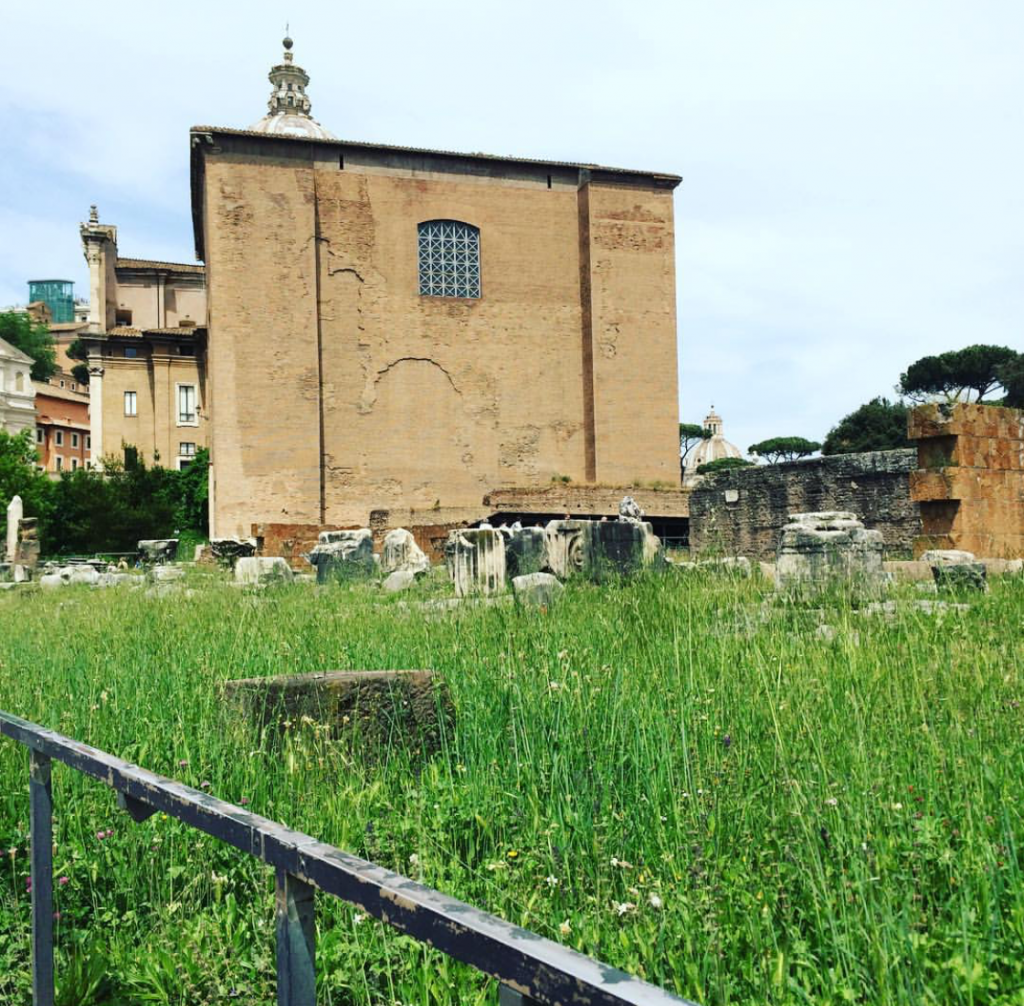
Within close proximity to the Basilica Aemilia was the Curia (Senate House), a political meeting space where the elected Senators of Rome determined the laws of the land. First designed in the 7th century BC, the Curia was the center of government when Rome became a Republic. The Senate’s President sat at one end while three tiers of wooden seats provided circular seating across from him where they conducted debates. The Comitium, located in front of the Curia is where the Popular Assembly met.
While Julius Caesar was murdered in the Senate House, it was not at this location. At the time of his death, a temporary meeting place had been established across town.
During Caesar’s funeral, it was Mark Antony who gave the eulogy on the elevated podium known as the Rostrum. Built for public announcements, the 10 foot high, 80 foot long platform was a place for citizens to exercise their freedom of speech, while political officials would publicly voice their opinions on a number of partisan issues.
Although the Arch of Septimus Severus is within view of the Rostrum, the structure was not completed until 203 AD, long after Julius Caesar had passed. The triple arch, standing six stories high, represented Severus’ conquest over the Parthians (modern Iran). I have always been fascinated with the arches of the Forum and the propaganda displayed through a series of reliefs and roundels. Etched into the marble, travertine and brick, the Emperors would document their victories forever in stone. 
While the Romans loved to build temples in honor of their rulers, the sanctuaries to their gods were just as important to them. They believed that their prosperity and good fortune depended on the happiness of their gods, so they built many shrines to appease them. Many of the structures also served a dual purpose, such as the Temple of Saturn , first built in 495 BC which housed the Aerarium, the state treasury. The wealth and riches from Rome’s conquests would have been stored in the pedestal of the statue of Saturn. Eight Ionic columns and a section of the frieze remains of the entrance to the temple, which was the most honorable shrine in the Forum.
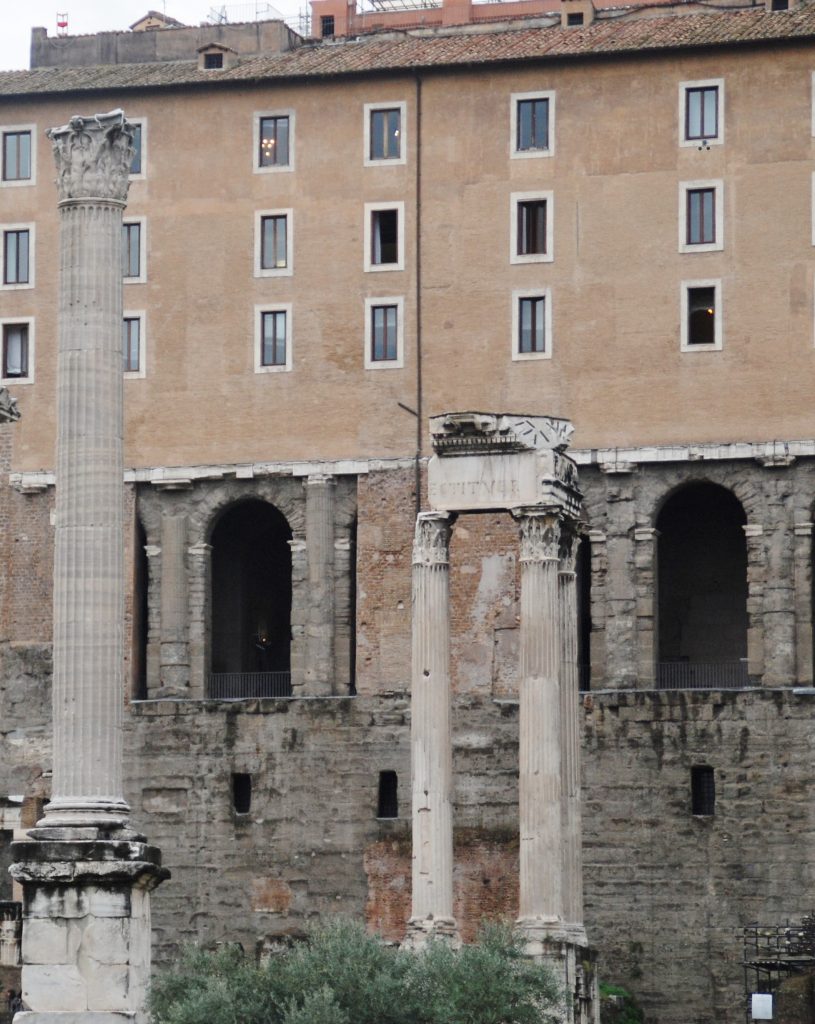
The last monument erected in the forum is a lonely Corinthian column to the left of the Temple of Vespasian and Titus, the Column of Phocas. While the western empire ended in September of AD 476, Phocas became the Byzantine Emperor in Constantinople until he was overthrown in AD 610. By the time the memorial was dedicated to Emperor Phocas in AD 608, the city of Rome was in decline and would eventually come to an end.
So, while our tour did not last as long as the Roman Empire, it too came to an end and we were offered the opportunity to roam the ruins for an additional thirty minutes. Before making our way towards the exit, our guide pointed out a set of brick ruins next to the Arch of Septimius Severus identified as the Umbilicus Urbis. She noted that it was the oldest set of ruins within the Forum and was considered to be the “center of the world”. It was from this point, that all distances from within the Roman Empire were measured. While Rome was once the most powerful epicenter of civilization, it was quickly abandoned in the 7th century AD, It would take over 1,000 years for this ancient metropolis to be rediscovered and later still to become one of Rome’s most visited historical attractions.
What were your thoughts as you explored the Roman Forum? Do you have another ancient civilization that has inspired you? I would love to hear about your adventures if you would kindly leave a comment below. Many thanks for reading about my visits to the Roman Forum and wishing you many Happy Travels.
What to See and What to Do:
Roman Forum
Via della Salara Vecchia, 5/6
00186 Roma RM, Italy
Telephone; +39 06 0608
- Admission Fee: 12 Euros per adult, children under the age of 17 are free; The Admission Fee includes entrance into the Palatine Hill and the Colosseum.
- Bus/Train Information: Buses 40, 44, 84, 780 and 810; Metro Station – Colosseo, line B- (blue)
- Hours: Open daily from 8:30AM to 3:30PM (closed January 1st and December 25th) The ticket counter closes one hour before closing time. Confirm with the Roman Forum’s website: https://turisimoroma.it/cosa-fare/fori
- Amenities: audio headsets, tour guides (additional charge)
- Audio Guides and Guided Tours: Audio guides are available for a nominal fee.
- Length of the Tour: 2 – 3 hours total
- Tips for Your Visit: Your ticket to the Roman Forum includes The Colosseum and Palatine Hill. For security reasons, it is strictly forbidden to enter the attraction with backpacks, camping equipment, bulky bags, luggage or trolley. Medium and small-sized backpacks are permitted, but may be screened by metal detectors. Bags may also be opened and visually inspected by security. Wear comfortable shoes and bring your water bottle to refill at the drinking fountains.
Where to Stay:
Hotel Forum Roma
Via Tor de’ Conti, 25, 00184
Rome, Italy
Telephone: +39 06 67 92 446
We lucked out finding this gem of a hotel in the midst of ancient Rome. Make sure to stop by the Roof Garden Restaurant for spectacular views.
Where to Eat:
Iari the Vino
Via del Colosseo, 5
Rome, Italy
Telephone: +39 06 6919 1069
I have to give Peter credit for finding this fabulous spot for lunch. I thoroughly enjoyed the Calamari salad and he ordered the lasagna. Deliciouso!
Trattoria Da Enzo
Via dei Vascellari, 29,
00153, Roma, RM, Italy
Telephone: +39 06 581 2260
This restaurant is outstanding for its artichokes, carbonara dishes and Cacio e Pepe
What to Eat:
- Artichokes: steamed or fried
- Cacio e Pepe: Cacio is a type of cheese from Rome’s countryside made from sheep’s milk. The dish is served over pasta and seasoned by black pepper.
- Carbonara: creamy white pasta served with pancetta and noodles
- Gelato: You have not had gelato until you have had it in Rome!
- Maritozzi is a popular breakfast pastry with chocolate chips served with espresso. Some maritozzi are filled with cream as well.
- Pecorino Romano cheese
- Pizza al Taglio is Rome’s answer to pizza with red sauce, meats, vegetables and cheeses. I also love the Italian margarita pizza with red sauce, mozzarella cheese and topped with basil.
- Porcetta: Pork wrapped around herbs and roasted on a spit
- Saltimbocca is a dish made with veal and sage wrapped in prosciutto, cooked in white wine and butter.
- Suppli is considered an Italian snack made of rice and meat with tomato sauce and filled with mozzarella cheese and then deep-fried. It reminds me of arancini in the US.
Where to Drink:
Il Goccetto (for wine)
Via dei Banchi Vecchi, 14
00186, Roma RM, Italy
Telephone: +39 06 9944 8583
Terrazza Borromini
Via di Santa Maria dell’Anima, 30A
00186 Roma RM, Italy
Telephone: +39 06 6821 5459
While the drinks are pricey, it will be worth the cost for the fabulous views.
What to Read:
- Imperium, by Robert Harris
- Roma, by Steven Saylor
- SPQR, by Mary Beard
- The Twelve Caesars, by Robert Grave
Photo Guide for Rome:
- Campo de’ Fiori for photos of the market
- The Colosseum
- Monti for upscale boutiques, restaurants and vintage stores
- The Pincio Terrace overlooking Piazza del Popolo in northern Rome
- The top of St. Peter’s Basilica
- Trastevere neighborhood for scenic alleyways, artisan workshops, the piazza at sunset, and tiny boutiques. Find the corner of Vicolo delle Torro off of Via della Lungaretta for photo-worthy pics.
- Trevi Fountain
